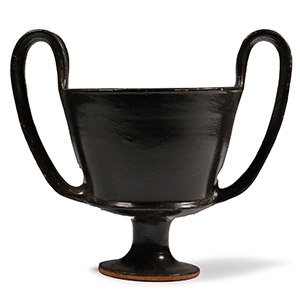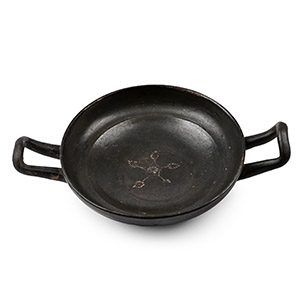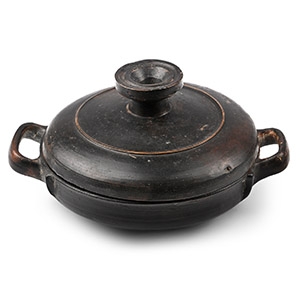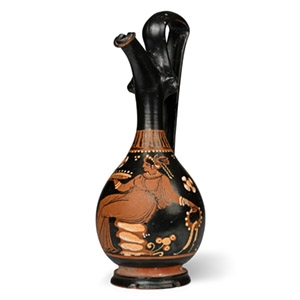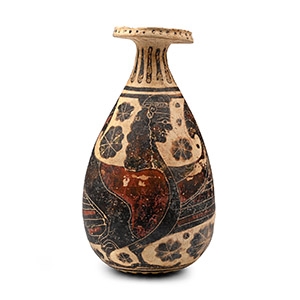Home > Auctions > 9 - 17 September 2025
Ancient Art, Antiquities, Books, Natural History & Coins
From the private collection of a Canadian gentleman living in Essex, UK, formed since the 1920s-circa 1990.
Property of an Essex lady until the late 1990s; thence by descent.
From the private collection of an Essex gentleman since the late 1990s.
This lot is accompanied by an illustrated lot declaration signed by the Head of the Antiquities Department, Dr Raffaele D'Amato.
From the private collection of a Canadian gentleman living in Essex, UK, formed since the 1920s-circa 1990.
Property of an Essex lady until the late 1990s; thence by descent.
From the private collection of an Essex gentleman since the late 1990s.
This lot is accompanied by an illustrated lot declaration signed by the Head of the Antiquities Department, Dr Raffaele D'Amato.
Private collection, Southern Germany, acquired in 1960s.
with Paul-Francis Jacquier, Numismatique Antique, Münzen und Kunst der Antique, 13 September 2013.
Acquired by the present owner at the above sale.
This lot has been checked against the Interpol Database of stolen works of art and is accompanied by search certificate number no.12189-222313.
This lot has been cleared against the Art Loss Register database, and is accompanied by an illustrated lot declaration signed by the Head of the Antiquities Department, Dr Raffaele D'Amato.
Cf. The Metropolitan Museum, New York, accession number 76.12.4, for similar; for other similar examples Papuci-Władyka, E., Corpus Vasorum Antiquorum, Poland, Fascicule 11, Cracow Fascicule I, Cracow, 2012, pl.43; see also a similar lekythos decorated with warriors in combat at the New Art Gallery Walsall, inventory no.1973.284.GR; for a general bibliography on the Attic Greek black-figure lekythoi see Haspels, C.H.E., Attic Black Figured Lekythoi, Paris, 1936; Beazley, J. D., Attic Black-Figure Vase-Painters, New York, 1978, pp.463-464, 699; Boardman, J., Athenian Black Figure Vases, New York, 1993, pp.114-115, fig.237; also Boardman, J., Les vases athéniens à figures noires, Paris, 1996.
The clothing and weapons of the hoplites are detailed copies of hoplites of late decades of 6th century B.C. The left warrior wears a Corinthian helmet with a high crest, a richly decorated robe and greaves. His round Attic shield, from which a richly pleated chlamys hangs down, is decorated with large circles. The middle and the right hoplite wear Corinthian helmets with a lower crest, and also beautifully decorated robes and greaves. They hold very large, Boeotian-shaped shields with striking bundles of lightning and 'flames'. As a beautiful counterpart to the left fighter, the right warrior carries a chlamys with long folds over his shoulder.
with H.A.C., Basel, prior 1999.
Accompanied by a thermoluminescence analysis report no.N125a51 from Oxford Authentication.
Accompanied by an academic report by Dr Raffaele D'Amato.
This lot has been checked against the Interpol Database of stolen works of art and is accompanied by search certificate no.12461-228712.
This lot has been cleared against the Art Loss Register database, and is accompanied by an illustrated lot declaration signed by the Head of the Antiquities Department, Dr Raffaele D'Amato.
Cf. Biers, W.R., The Archaeology of Greece. An Introduction, Ithaca-London, 1987, fig.8.63, p.236, for a similar statuette; see a similar terracotta of seated Demeter at the Brooklyn Museum, accession no.34.689; other similar terracottas at the British Museum, London, accession nos. GR 1863, 0728, 273, 274, 266, 268 and 269.
One of the most typical 6th century B.C. terracotta female figurines was that of a standing or seated woman wearing a chiton and a himation over it. It was a votive figure offered at the shrines or temples, usually representing the goddess Demeter. Attica was one of the principal centres of figurine production, but Corinth continued to produce solid standing or seated females with moulded fronts and flat backs. The mass production of such terracotta was also typical of Magna Graecia.
North European private collection, 1980s.
Private collection, acquired in 2005.
This lot has been checked against the Interpol Database of stolen works of art and is accompanied by search certificate number no.12763-237138.
This lot has been cleared against the Art Loss Register database, and is accompanied by an illustrated lot declaration signed by the Head of the Antiquities Department, Dr Raffaele D'Amato.
See Отчет археологической комиссии за 1909-1910 гг. (Ст. Петербург 1913), 215-216, fig. 246, for matrices found in the region of Tuapse.
Masterpieces of Ancient Eurasian Art - Volume 1, 2008.
Bronze matrices for such horns were found at the turn of the century in the vicinity of Tuapse on the eastern coast of the Black Sea; these are now kept in the Hermitage. While the style of the decoration suggests that the craftsman who made the matrices had a distant knowledge of the type of late Hellenistic ornament figured on objects of Parthian manufacture, its provincial presentation suggests that the matrices cannot have been made earlier than the 1st century A.D. The decoration of the tube finds a parallel on the tube of a silver-gilt rhyton of a similar construction with four decorative friezes on the horn, including the motifs, wide-spread in the art of the Roman Empire, such as amours carrying garlands, which was exhibited at the Christie’s in New York in 2003. A defining feature of this rhyton is the glass inlays in the upper two registers which are placed randomly, primarily in the upper field below the rim. Such inlaid cells were widely used on jewellery and vessels made of precious metals in the late Hellenistic period, as for example on the mounts and belt tabs from Zubov barrow no. 1 in the Kuban area. They were also employed in the 1st to 2nd centuries A.D. in the North Pontic area, and it seems possible that the matrices and the rhyton date to this period and were executed in a workshop located on the fringe of the Roman world. This is likely to have been one of the local workshops, whose products catered to the tastes of the populations of the foothills of the north-western Caucasus. The images of the deities represented on the rhyton are of considerable importance for understanding the culture and religious beliefs of the populations of this area.
Ex Mr Bohler, Bern, Switzerland, prior 2001.
Accompanied by a copy of an Art Loss Register certificate no.S00074898.
This lot is accompanied by an illustrated lot declaration signed by the Head of the Antiquities Department, Dr Raffaele D'Amato.
Cf. similar in University of Colorado, Boulder, under accession no.2006.21.T.
with S.C., Basel, prior 2003.
Accompanied by a copy of an Art Loss Register certificate no.S00075178.
This lot is accompanied by an illustrated lot declaration signed by the Head of the Antiquities Department, Dr Raffaele D’Amato.
This lot is accompanied by an illustrated lot declaration signed by the Head of the Antiquities Department, Dr Raffaele D'Amato.
Cf. Metropolitan Museum accession no.66.111, for type.
From the private collection of a Canadian gentleman living in Essex, UK, formed since the 1920s-circa 1990.
Property of an Essex lady until the late 1990s; thence by descent.
From the private collection of an Essex gentleman since the late 1990s.
This lot is accompanied by an illustrated lot declaration signed by the Head of the Antiquities Department, Dr Raffaele D'Amato.
From the private collection of a Canadian gentleman living in Essex, UK, formed since the 1920s-circa 1990.
Property of an Essex lady until the late 1990s; thence by descent.
From the private collection of an Essex gentleman since the late 1990s.
This lot is accompanied by an illustrated lot declaration signed by the Head of the Antiquities Department, Dr Raffaele D'Amato.
From the private collection of a Canadian gentleman living in Essex, UK, formed since the 1920s-circa 1990.
Property of an Essex lady until the late 1990s; thence by descent.
From the private collection of an Essex gentleman since the late 1990s.
This lot is accompanied by an illustrated lot declaration signed by the Head of the Antiquities Department, Dr Raffaele D'Amato.
From the estate of a deceased American, acquired between 1970-1989.
with Bonham's, London, Knightsbridge, 28 October 2009, no.23 [part].
This lot has been cleared against the Art Loss Register database, and is accompanied by an illustrated lot declaration signed by the Head of the Antiquities Department, Dr Raffaele D'Amato.
Acquired on the European art market in the early 2000s.
with Galerie Rhéa, Zurich, Switzerland.
This lot is accompanied by an illustrated lot declaration signed by the Head of the Antiquities Department, Dr Raffaele D'Amato.
25 - 36 of 3897 LOTS

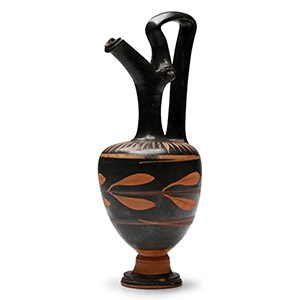
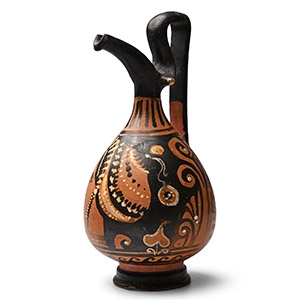
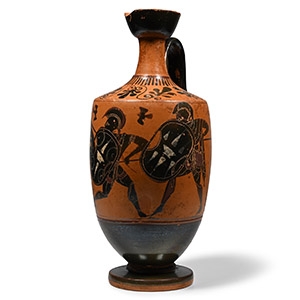
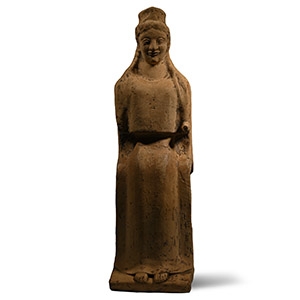
.jpg)
